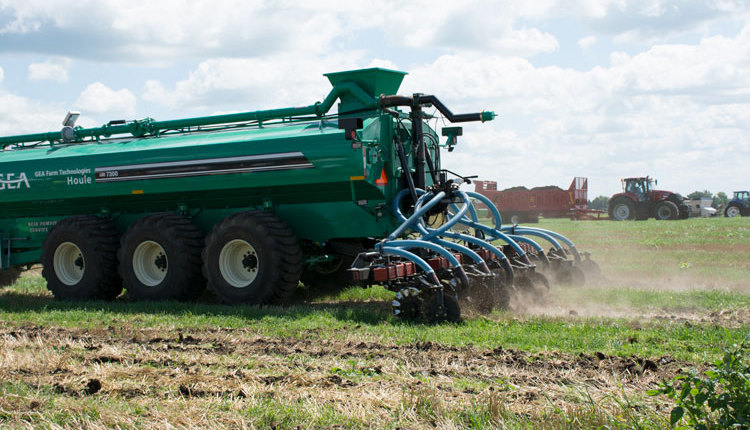
Manure has tremendous value when used as a fertilizer source. Make the most of that value by knowing exactly what you are spreading.
Amber Radatz, UW Discovery Farms co-director, likens nutrient crediting to online shopping. In her presentation at the UW Discovery Farms Annual Conference held in Wisconsin Dells, Wis., earlier this month, she said that once you place an order online, you patiently wait for it to arrive.
“If it doesn’t show up, do you place another order?” she asked the audience.
“No,” she answered. “You would investigate further.”
The same is true for manure. Once you apply manure or fertilizer, you should not apply more until you further investigate the situation by way of manure, soil, and/or plant tissue sampling.
Radatz noted that on farms with several sources of nitrogen, it can be really difficult to manage, but there is opportunity. For manure users, she said to take another look at nutrient crediting as a way to save on fertilizer purchases.
“I know that there is variation in nutrient availability in manure,” Radatz said. “But that is not a reason to lack confidence in crediting or to not take credits. It’s a reason to verify those specifics on the farm.”
Nutrient crediting can save farmers money and avoid overapplication by taking credit for the fertilizer value of manure and legume crops. The value of these credits is subtracted from the base fertilizer recommendations for a field. There are worksheets and apps available to help farms do this calculation.
One can estimate the nutrient content of manure, but these numbers may vary greatly from farm to farm due to animal species, number of animals, ration ingredients, manure handling, and application method. It is best to know the amount and availability of nutrients, and this can be learned through manure sampling.
Radatz offered these simple steps for taking the credit you deserve for manure:
1. Verify and use nutrient crediting for all fertilizer sources on your farm, including manure. Test manure before application and develop realistic yield goals for crops. Use record keeping, nitrogen efficiency use calculations, and work with professionals to streamline your nutrient applications.








